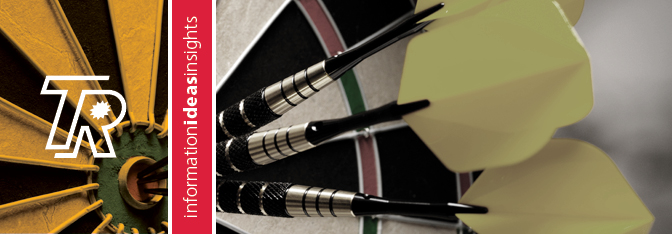
For those of you who have played a game of classic Atari Centipede or today’s popular Candy Crush, would you ever think the mechanics behind one of your favorite games could find a place in the business world? It has, and the emerging trend of gamification is attempting to break the barrier of old past time to an engaging and social activity that can drive productivity in the workplace.
Widely used in marketing and for customer retention, you can find gamification almost anywhere; check your keychain, wallet or smartphone – from exercise apps to travel apps and consumer loyalty cards to frequent flyer programs – gamification has probably made its way into your every day life.
What is gamification you ask? It is often defined as the use of gameplay mechanics for non-game applications. Simply – it’s a focus on incentives and using the draw of gaming to reward or engage employees, thus increasing productivity and making the workplace more fun.
The concept of gamification is not new, gaining popularity in 2010 and more recently within the past year, many organizations have been incorporating social reward aspects of games into programs they use. In fact, Garnter predicts that 70 percent of 2,000 global organizations will use at least one gamified application in their business by 2014.
As companies desperately struggle with low employee engagement scores and the financial restraints brought on by the economic recession, they are looking for innovative and fun initiatives to help with these challenges. What better way than taking advantage of what gaming does – providing a sense of personal accomplishment and having someone’s total attention – then applying it to problem solving, innovation and learning to drive results.
What does gamification look like?
At its basic level, a game is an interactive and structured experience. With defined goals and rules, a player must overcome challenges or tasks in order to move on to another level. When the rules are followed and the goal(s) are accomplished, instant feedback is provided to the player.
Using gamification to improve productivity and increase engagement can look different in each organization. For instance, at Target, they have made the checkout process for their employees more game-like. When the cashier checks a customer out, a red light tells them they were too slow and a green light appears when they are spot on at scanning each item. Once the transaction is complete, the cashier is provided a real time score to reflect how they are doing. This gaming feature has increased cashier efficiency.
Not only can gamification be used for driving productivity and engagement it can even be used to build leaders. Forbes reports on two companies, NTT Data and Deloitte that are using gaming to develop their leaders and achieving tremendous results.
Considering gamification?
The secret behind a well-designed gamification platform is about leveraging the ability to overcome challenges and bringing a game element to a non-game setting. Applying game mechanics have been associated with basic human desires and when combined can contribute to a fully engaged, interactive, and stimulating work environment where employees are able to feel a sense of accomplishment.
Like any new initiative, gamification shouldn’t be taken lightly and it should be implemented thoroughly. There are several points to consider before building gamification into your organization:
Good design – Having a clear design objective will jumpstart a gamification strategy and make sure it’s developed successfully. Focus on encouraging certain behaviors in the workplace and creating a solid message behind the design. The program should appeal to everyone in the organization and generate excitement and participation.
Don’t game to pressure workers - Introducing gaming just to pinch the last bit of productivity out of employees won’t work. A program will be far more successful when it is fun, but also designed to enhance work.
How to reward – we all know monetary rewards aren’t the most rewarding. Instead, drive engagement and productivity by displaying the information for the entire organization to see. For instance, create levels that represent and measure the success or productivity. Display a leaderboard that ranks and recognizes those employees that are achieving the highest level. People inherently like to win and by making it social they’re able to compete against their fellow co-workers – so a little competition or challenge can go a long way.
Gamification has its’ skeptics. They doubt the longevity of gamification, calling it a marketing fad and consider it an extension of existing ideas already in marketing, like loyalty programs. But gamification also has its’ advocates, like Adam Penenberg, who recently expressed in a Forbes article, that gamification is going to change the workplace. Penenberg even authored a book - Play at Work: How Games Inspire Breakthrough Thinking - that cites how playing games is becoming smart business.
Like all trends…from fashion and hairstyles to the latest gadgets in automobiles, some stick and become widely adopted, while others disappear only to be re-invented a few years later.

